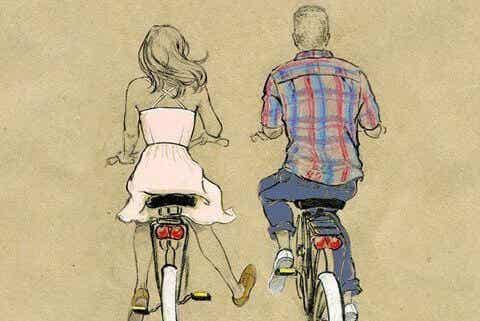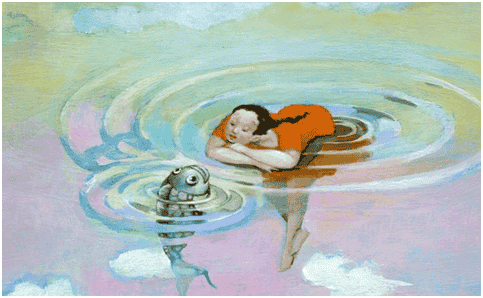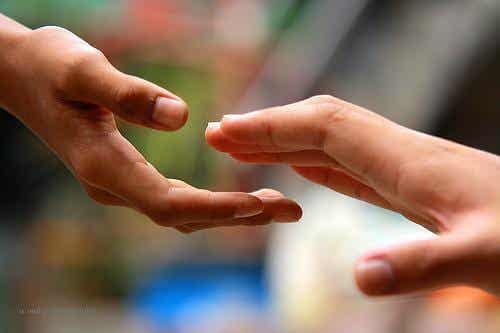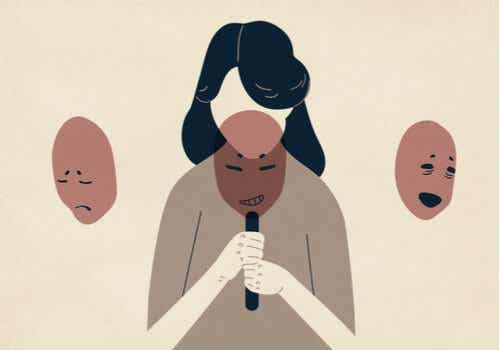
Last update: April 18, 2016
A child laughs up to 400 times a day, but the happiest adults do not exceed 100 laughs a day and the average is around 20 or 30 laughs a day. This means that as you grow, laughter and smiles disappear from our life, despite the benefits they represent for us. In this way, too, we learn to pretend, instead of showing our sadness.
There are many cases in which we hide our true feelings behind a smile and say that everything is fine; in reality we are sad, but we do not have the courage to explain why e we think it is easier to smile than to explain our sadness to others.
"I am of the opinion that what we call beauty is found only in smiles".
-Leo Tolstoy-
Babies, even before they are born, smile. This was demonstrated by a group of Japanese researchers in 2012, when 6 different fetuses were imaged for 31 thanks to a new ultrasound technique; it was possible to see that, in that period of time, the fetuses had produced 51 smiles, with an average duration of 3,21 seconds. So, it is possible to say that we are able to smile even before we are born.
How to distinguish the smile that hides sadness
Over time, several studies have been conducted on the subject. In 1862, the French neurologist Duchenne Boulogne carried out a study thanks to which he came to the conclusion that the false smile is produced using only the muscles of the mouth and lips, while the sincere smile also activates the muscles surrounding the eyes.
In the year 1973, the psychologist Paul Ekman conducted an experiment in which he showed 30 photographs of 14 people belonging to different cultures and expressing the 6 primary emotions (joy, fear, surprise, sadness, anger and disgust). Thus, he came to the conclusion that emotions, especially cheerfulness, are associated in the same way by most subjects.
More recently, in 2012, various researchers at the Massachusetts Institute of Technology (MIT) developed a system to distinguish a forced smile from an authentic one. For this purpose, they asked a group of volunteers to start the experiment by pretending to be frustrated, then they were asked to fill in an online questionnaire created specifically to trigger frustration (since once they filled in the required fields and clicked on the " Accept ”, all information entered was deleted) and, finally, to watch a video showing a nice-looking baby.
In the first case, when they had to feign frustration, 90% of the subjects decided not to smile. Despite this, in the second case, 90% smiled even if they were frustrated and then also in the third case, with the video of the newborn, most of the participants smiled. The difference is that the frustrated smile is much more instantaneous than the cheerful one.
The muscles involved in both smiles are different, as when you smile genuinely, the muscles that raise the cheeks and wrinkle the area around the eyes are activated.
“Laughter is tremendously relaxing, it's a great way to meditate. When one is able to laugh totally, when one is able to laugh totally, one enters a space of no-mind, of no-time. The mind, logically, lives on expectations, but laughter is something that comes from beyond ".
-Osho-
Why do we hide behind laughter?
Behind a false laugh, there can be several reasons. One of the most common is the fear of showing our true feelings when we are sad or when we are not well. In these situations, we feel vulnerable and bringing out our feelings and explaining them seems more complicated than just smiling.
On other occasions, we smile to hide our sadness and don't hurt the person in front of us. However, we do not realize that that fake smile unmasks us and that it can hurt both us and the person we smile at when, in reality, we are sad.
The power of a sincere smile
From an early age we learn the power that a smile can have and the effect it has on others. A newborn interprets the smiles of his father or mother as a symbol of trust, they confirm to him that he is doing something well or that there is no danger. By the way, in 1957 a study was carried out in the United States which consisted of placing children on the edge of a transparent glass surface that seemed to prune them over the void, what they called a “visual cliff” or a “visual precipice”.
"Life is full of loneliness, misery, suffering, sadness and, despite this, it ends too quickly".
-Woody Allen-
The children thought that if they walked on the transparent surface, they would fall into the void. Across the transparent table were the mothers, some of whom were smiling, some of whom were not. Those who smiled were able to help their children overcome fear and cross the surface. The children of mothers who did not smile, however, decided not to cross the glass surface.
Even among adult men and women there is an undeniable power derived from a smile. In fact, in 2001, a study was conducted that showed that people are 10% more likely to trust someone who smiles. To conclude, in 1985 it was shown that women who smile are 40% more attractive to men.


























